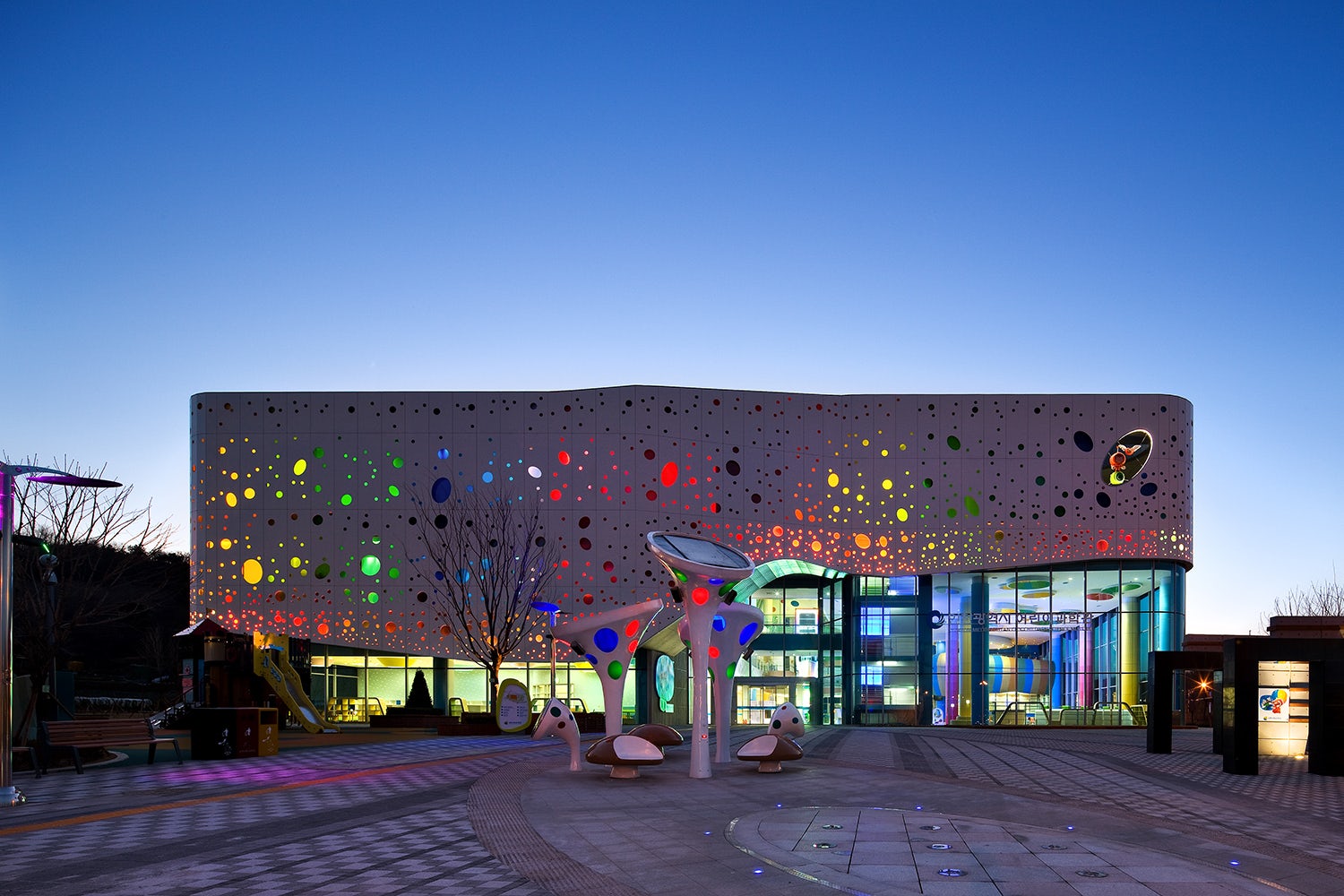In New York’s scenic Brooklyn Bridge Park, Danish artist Jeppe Hein has installed an unusual series of ephemeral artworks entitled “Please Touch the Art.” To the delight of New Yorkers of all ages, viewers are invited to sit on, walk through, and climb all over the artist’s creations. This refreshingly informal approach to taking in artwork inspired many viewers to rethink the way we traditionally observe art. When taken outside of the clean gallery space — free from its sense of formality and implied code of conduct — how would viewers interact with the artworks in front of them?
How might architects create spaces that encourage play, learning, and a feeling of childlike wonder? This challenge is better understood by taking a closer look at contemporary children’s museums. Unlike formal, ‘adult’ museums, these cultural centers are designed to encourage playful interaction and hands-on educational experiences. Colorful, immersive installations, toys to play with, and tables for workshops encourage children to make art and learn about it. The production and presentation of art take place in the same space, giving students an opportunity to engage in the creative process and see themselves as artists.
The architects behind these child-friendly museums take design cues from educational institutions, playgrounds, and conventional art museums. With these three architectural genres in mind, designers keep even the youngest audiences engaged by combining play with new information. So, the next time you’re in need of a little inspiration, take a pause from adult life and get in touch with your inner child at these museums:

© Park Youngchae

© Park Youngchae

© HAEAHN Architecture
Incheon Children Science Museum by HAEAHN Architecture, Incheon, Korea
The design of this colorful Korean children’s museum is inspired by sponges, a visual reference to childhood learning and development. The sponge concept is consistent on both the interior and exterior of the structure, with circles of varying size repeated throughout the museum. The playful, almost cartoonish use of bright colors throughout the building appeals to young visitors.

© Koning Eizenberg Architecture

© Koning Eizenberg Architecture
Children’s Museum of Pittsburgh by Koning Eizenberg Architecture, Pittsburgh
Lit up at night, this glass-and-steel structure becomes an illuminated lantern. The structure connects the Old Post Office Building with a vacant planetarium, breathing new, youthful life into this industrial neighborhood. Interactive exhibits, a small garden, and a children’s theater space attract families and student groups from the area.

© COORDINATION ASIA

© COORDINATION ASIA

© COORDINATION ASIA
Kids Museum of Glass by COORDINATION ASIA, Shanghai, China
This children’s museum, which opened earlier this year, focuses on educating its young visitors about design and glass-making. Set in a former industrial building, the space is playfully decorated with kaleidoscopic patterns and brightly colored furniture that stand out against the blackened glass walls. Multimedia exhibitions show children how glass is made and the chemistry behind it.

© Architecture Is Fun, Inc.

© Architecture Is Fun, Inc.

© Architecture Is Fun, Inc.
Young at Art Museum by Architecture Is Fun, Inc., Davie, Fla.
This Florida museum encourages children to explore and participate in the art. Toys shaped like famous works of art (note Hokusai’s wave, above) and mini-gallery spaces feel like a traditional museum meets a playground.

© MGA Partners Architects

© MGA Partners Architects

© MGA Partners Architects
Children’s Discovery Museum of the Desert by MGA Partners Architects, Rancho Mirage, Calif.
A kind of community center for families in California’s Coachella Valley, this museum design is consistent with the desert-modern aesthetic typical of the area. The museum’s interactive exhibitions include a laser harp, a harp with sensors instead of strings that allows children to experiment with music, and an animation station that lets kids create their own short film clip.

© WORKac

© WORKac

© WORKac
Children’s Museum of the Arts by WORKac, New York
Located in New York’s Chinatown district, this new children’s museum is complete with a “stroller parking garage,” an art studio, a ball pond, and, of course, a “clay bar” — with bartenders who serve children clay to create their own sculptures. Children are inspired to make art and have fun learning about it.

© Gruba

© Gruba
Abasto Children’s Museum by Gruba, Buenos Aires, Argentina
Designed for children aged zero to three, the designers behind this space replicate the outside landscape using wood, felt, and soft leather. The undulating, stylized ceiling adds interest to the design and creates a nice play environment for Argentina’s youngest museum-goers.




